Knowing your business growth stage is critical if you want to speed your business growth. A previous posting, The Search for Growth Continues, concluded a 5 business growth stage model made the most sense. It’s most common and statistical research supports it . Here are the five business growth stages used in the BGS business growth model: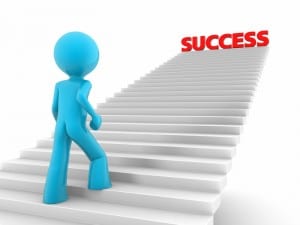
- Foundation
- Survival
- Self-Sustainability
- Rapid Growth
- Maturity
Let’s take a brief look at what you should generally expect in each business growth stage.
Business Growth Stage 1: Foundation
Goal: Get monthly cash flow to the point of consistent breakeven.
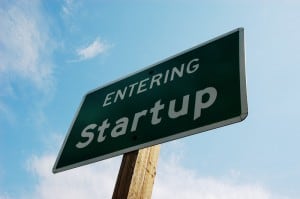 You might think that the foundation business growth stage is the same as the startup stage for a company. But in fact, there are many businesses that have been around a long time and still cannot break even month to month.
You might think that the foundation business growth stage is the same as the startup stage for a company. But in fact, there are many businesses that have been around a long time and still cannot break even month to month.
Businesses in the foundation stage need better owner leadership and company management focused on creating consistent monthly cash flow. Later you’ll learn about strategies to help you get out of the foundation stage and move on to making real profits.
Business Growth Stage 2: Survival
Goal: Consistently achieve owner-established profit requirement.
 The shift at this business growth stage is moving from just breaking even every month to real profitability. As an owner, you have invested time, money, and hard work into your business. Now, you need to begin getting a return on investment (ROI).
The shift at this business growth stage is moving from just breaking even every month to real profitability. As an owner, you have invested time, money, and hard work into your business. Now, you need to begin getting a return on investment (ROI).
You need to go beyond just making enough to keep the doors open! You must begin expanding the systems created in the foundation stage to consistently meet the profit requirement you have set for your business. Notice it’s a profit requirement, not just a goal! That’s because to become independent and financially free, you need a certain amount of income. The business’ net profit must generate it for you.
Your level of business knowledge must increase too. If it doesn’t your business will start to stagnate. Later you’ll see why so many business owners get stuck here in the survival stage. It’s what we call “nowhere land.”
Business Growth Stage 3: Self-Sustainability
Goal Path A. Sustain the business’s success created to this point.
or
Goal Path B. Rapidly grow the business to a large corporation.
 When you achieve the self-sustainability stage, your business consistently generates a profit without you. This is what give you the independence and financial freedom to choose your next goal.
When you achieve the self-sustainability stage, your business consistently generates a profit without you. This is what give you the independence and financial freedom to choose your next goal.
Sustaining success means you choose to let your business run itself. It will stay the same size until you are ready to act on your business succession or exit plan. Rapidly growing means you choose to grow your business into a large corporation with the help of an executive team.
But beware, this is where many owners get mired between self-sustainability and survival. In fact, many owners think they are in self-sustainability stage when they are actually still in survival. So how do you know if you are firmly in self-sustainability? Take the self-sustainability litmus test.
Litmus test: Does the business consistently generate profit without your intervention?
If your answer is “Yes,” then your business is self-sustainable and has real value because it is running on its own. If your answer is “No,” then your business is stuck in the survival stage. This is because it relies on you. You have to get up every day and “go to work” to make sure the business consistently generates a profit.
Being stuck in survival has consequences. You still have a job. It it will be difficult, if not impossible to do what you really want to do. Often business owners get stuck here because they think they must work it and stay the same size until they are ready to act on succession or an exit plan or to move to rapid growth.
Business Growth Stage 4: Rapid Growth
Goal: Assure that growth does not outpace assets, resources, and systems.
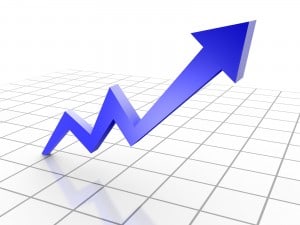 In this business growth stage the owner decided to grow the business into a large corporation, as opposed to disengaging and keeping the business the same size.
In this business growth stage the owner decided to grow the business into a large corporation, as opposed to disengaging and keeping the business the same size.
Self-sabotage is a problem in the rapid growth stage. Many business owners started their business to get out of the corporate grind. Being part of the corporate grind means you are a cog in a self-sustaining system because you are serving in some kind of operational role. It stands to reason, that if you continue in an operational role in your business, then you’ve created your own corporate grind and your own place as a cog.
In the rapid growth stage, large sums of capital are needed as the business takes on more and more customers. Therefore, this business growth stage requires more people, equipment, and materials. The resources needed to service these new customers seems ever expanding.
Properly executed, in this business growth stage a small business becomes a big company. If not managed properly, this stage can be the death of a company. Yet many business owners resist and sabotage rapid growth efforts by refusing to give up their operational roles. You can combat this problem using DE, Inc.’s Personal and Business Goal Assessment.
Business Growth Stage 5: Maturity
Goal: To diversify the company by offering related products or services to existing customers or by entering new markets.
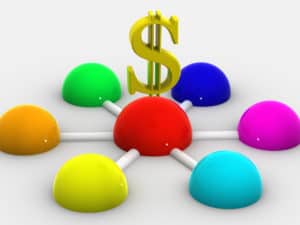 Once rapid growth is achieved a business moves into maturity. The all-too-typical characteristics of businesses in this business growth stage are big and lethargic. The business again reaches a plateau. Saturated market or ill-prepared management team’s can kill the business’s growth.
Once rapid growth is achieved a business moves into maturity. The all-too-typical characteristics of businesses in this business growth stage are big and lethargic. The business again reaches a plateau. Saturated market or ill-prepared management team’s can kill the business’s growth.
Businesses in the maturity stage often cannot react to major shifts in the market. This is another way business die here. But, well managed businesses in this stage begin to diversify in ways that allow the company to continue to grow.
Work in the maturity stage is accomplished by moving into other markets or finding related products for the existing customer base. These other markets or products are really other entities in earlier stages of the growth model. So you may see different parts of the business begin working at different business growth stages of model.
For example, you might look at new product development as a strategy here. The new product is just another application of the foundation stage. So the growth model can operate at various levels within a business that offers several products or serves more than one market.
What is Your Company’s Business Growth Stage?
So, based on what you’ve read here what’s your business growth stage? Notice we ask at what business growth stage are YOU and your business? This is because as an owner your business’ growth is a direct reflection of your ability to grow the business!
There are 8 factors that influence business growth as detailed in the post of the same title. You need to focus on those which are holding you back from getting to your next growth stage.
Based on everything we do for its clients and the results we’ve gotten for them for years, this is our basic premise for everything we do. Harvard Business Review papers confirm it. Now our Business Growth Simplified approach is based on statistical facts.
 It’s time to take a hard look in the mirror and ask, “why is your business stuck?” If you are serious about growing your business maybe you need to grow yourself first? Remember, the success formula – personal growth, business leadership, life success. In fact, it is the first step in the BGS Growth Framework – complete a personal assessment before you do a business analysis!!!
It’s time to take a hard look in the mirror and ask, “why is your business stuck?” If you are serious about growing your business maybe you need to grow yourself first? Remember, the success formula – personal growth, business leadership, life success. In fact, it is the first step in the BGS Growth Framework – complete a personal assessment before you do a business analysis!!!
Find Out Your Business Growth Stage
If you’re not ready to go that far. Maybe an assessment of your current business growth stage will help? Just complete the form below. Complete the 37 yes/no question assessment. Then determine exactly where you should be focused to begin growing your business to the next business growth stage!

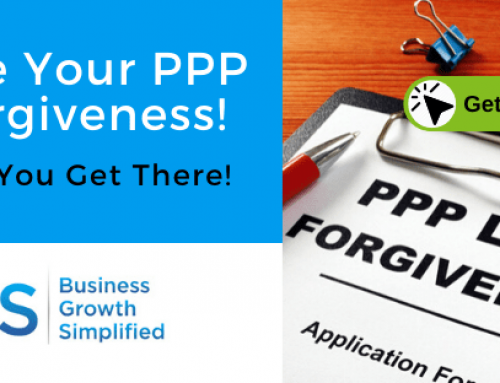

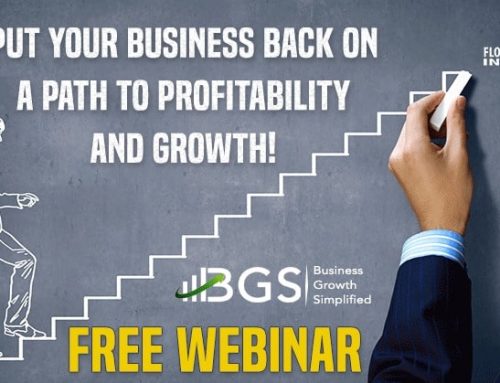
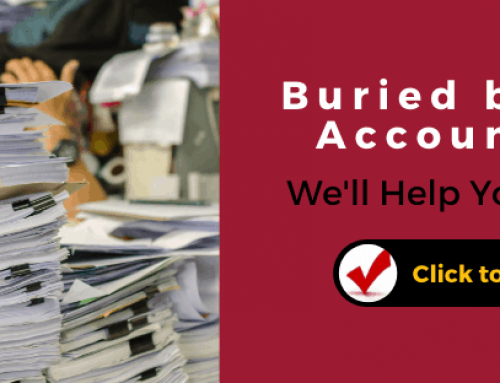
This article really sums up the stages of growth quite well. At some point in the process it may be wise to consider outsourcing the administrative duties to allow the business owner time to focus on that growth. A PEO company can take over or manage tasks such as payroll, worker’s compensation, employee benefits, Government filing, regulation & compliance, etc. When your business reaches that stage, PEOcompare.com can help you narrow down your choices, giving you a list of PEOs that match your particular criteria. This was a great article to help the business owner define and discover exactly where he’s at and what his goals are.
[…] that they are successful. If you look at the stages of business growth from my previous post At What Stage is Your Small Business Growth? you’ll see profitability only places you in the “survival stage”. It is sustainability […]
[…] exactly what stage of the growth cycle your business really […]
[…] with your business’ performance find out more about how to improve it by reading the post At What Stage is Your Small Business Growth?. Or if you are an entrepreneur that is unhappy with your life in general read the post Why So […]
It’s like you’re on a miisson to save me time and money!
Your positng is absolutely on the point!
Great website…
[…]we like to honor many other internet sites on the web, even if they aren’t linked to us, by linking to them. Under are some webpages worth checking out[…]……
Thanks for the recognition. We appreciate when others recognize our work. – Dino Eliadis
[…] frequently find the reason for their struggle is they are focused on the wrong objective for their stage of business growth. All small business owners should be focused on accomplishing 3 things and in this […]
[…] how you applied our tools and training was dependent on where you and/or your business were in the small business growth cycle. The result of researching my hunch was our The Small Business Growth […]
[…] and foremost you must understand at what stage is your small business growth. If you don’t know from where you’re starting, it’s difficult to chart a course for […]
[…] you’ve been following along on our blog then you are already familiar with the small business growth cycle. You also understand that each phase has a specific goal on which you must […]
[…] you’ve been following along on our blog then you are already familiar with the small business growth cycle. You also understand that each phase has a specific goal on which you must […]
[…] you’re not sure what the stage of growth of your business, I recommend the article At What Stage is You Business Growth. Most people seek my help when they realize that they are stuck between the survival and success […]
[…] and foremost you must understand at what stage is your small business growth. If you don’t know from where you’re starting, it’s difficult to chart a course for […]
[…] that they are successful. If you look at the stages of business growth from my previous post At What Stage is Your Small Business Growth? you’ll seeprofitability only places you in the “survival stage”. It […]
[…] of the first posts I published At What Stage is Your Small Business Growth?, I outlined the stages. This is a good place to start if you don’t currently know the stages. […]
[…] them and their company in order to elevate their business to the next stage of growth. The article At What Stage is Your Small Business Growth? helps introduce the basic characteristic of each growth stage so you can begin evaluating your […]
[…] month’s focus is on the growth stages. This is one of those critical topics that nobody really talks […]
[…] can learn more about the different stages by visiting this article, this article, or this article, as well as this article and this […]
[…] find the reason for their struggle is they are focused on the wrong business goal for their stage of business growth. All small business owners should be focused on accomplishing these 3 business goals, in this […]
[…] my previous post “What’s Your Business Growth Stage?” It gives you an overview of the business growth stages. Also read the post “8 Business […]
[…] find your growth stage you need to understand business growth. Read my previous post “What’s Your Business Growth Stage?” It gives you an overview of the growth stages. Also read the post “8 Business Growth […]
[…] You fix “root-cause” #1 by completing SPARC Step 2. It helps you figure out your business’ stage of growth. […]
[…] a previous post titled What is Your Business Growth Stage? , I discussed 5 stages and 8 factors influencing business growth. This is based on extensive […]